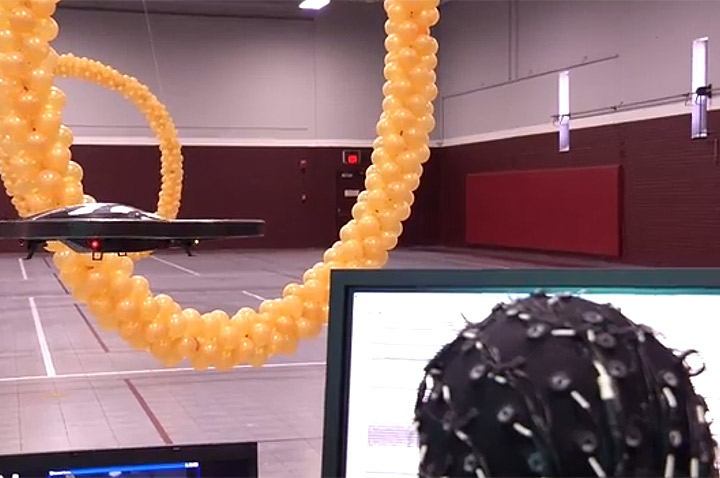TORONTO –A team of scientists have managed to fly and maneuver a robotic model helicopter—using the power of their thoughts.

“If you imagine making a fist with your right hand, it turns the robot to the right,” said Karl LaFleur, a graduate student who worked on the project. “And if you imagine making a fist with both hands, it moves the robot up.”
The team of neuroscience researchers at the University of Minnesota have used brain computer interfacing (BCI) technology to control the mechanical helicopter in a 3D space.
BCI systems have the potential to enable the physically disabled to perform many activities, improving their quality of life and productivity, allowing them more independence and reducing social costs.
In recent years, scientists have made significant advancements with BCI systems.
Just earlier this week, MindWalker—the world’s first mind-controlled exoskeleton that aims to enable paralyzed people walk using only their mind—made headlines.
In the March 2011 journal issue of Music and Medicine, researchers in England created technology that allowed a patient with locked-in syndrome to play music just by thinking about it, while a 2012 study in Nature reported that two people with paralysis were able to control robotic arms using their thoughts.
- After controversial directive, Quebec now says anglophones have right to English health services
- Something’s fishy: 1 in 5 seafood products are mislabelled, study finds
- Why non-alcoholic beer is gaining steam at Oktoberfest: ‘Nobody will judge you’
- Recall expands for Nutrabolics vegan bars over undeclared milk
But critics say the idea of controlling a model helicopter is unique for a couple of reasons:

Get weekly health news
“First, there’s the order of complexity to consider,” said George Dvorsky at i09.com.
“This quadcopter has to be navigated across three different dimensions… Incredibly, the copter can be seen zipping around the room as it flies through various sets of rings. It’s wild to think that it’s being navigated by an external, human mind.”
“Second, the achievement offers yet another example of the potential for remote presence. Thought-controlled interfaces will not only allow people to move objects on a computer screen, or devices attached to themselves — but also external devices with capacities that significantly exceed our own. In this case, a flying toy. In future, we can expect to see remote presence technologies applied to even more powerful robotic devices, further blurring the boundary that separates our body from the environment.”
In a YouTube video, the remote controlled robot with a nose-mounted camera is seen moving up and down, side-to-side and even flies through a ring.
While manoeuvring a remote-controlled helicopter with one’s thoughts may sound like something out of a Sci-Fi movie, the scientists at the University of Minnesota say their technology requires no brain implants and is non-invasive.
Breaking it down: how does it work?
The controller imagines a movement without actually physically moving, says the narrator in the YouTube video. Specific neurons in the brain’s motor cortex produce electric currents that are detected by electrodes in an EEG cap. These currents send the movement signals to the computer, which translates the signal pattern into a command by beaming it to the robotic helicopter via WiFi.
“This brain-computer interface technology is all about helping people with a disability or various neurodegenerative diseases, to help them regain mobility, independence and enhance performance,” said Professor Bin He, the project’s lead scientist at the University of Minnesota College of Science and Engineering.
“We envision they could use this technology to help control wheelchairs, artificial limbs or other devices.”
Professor He’s and his team’s findings were published Tuesday in the Journal of Neural Engineering.








Comments